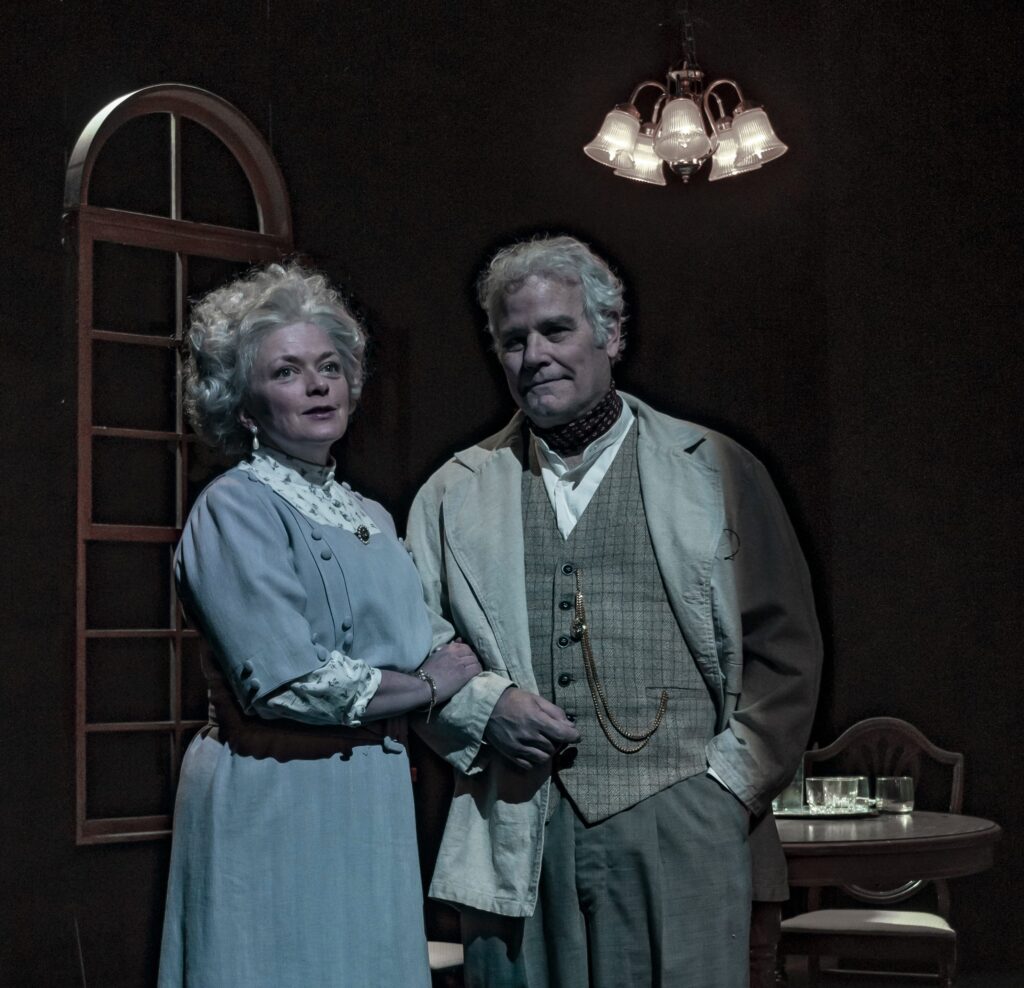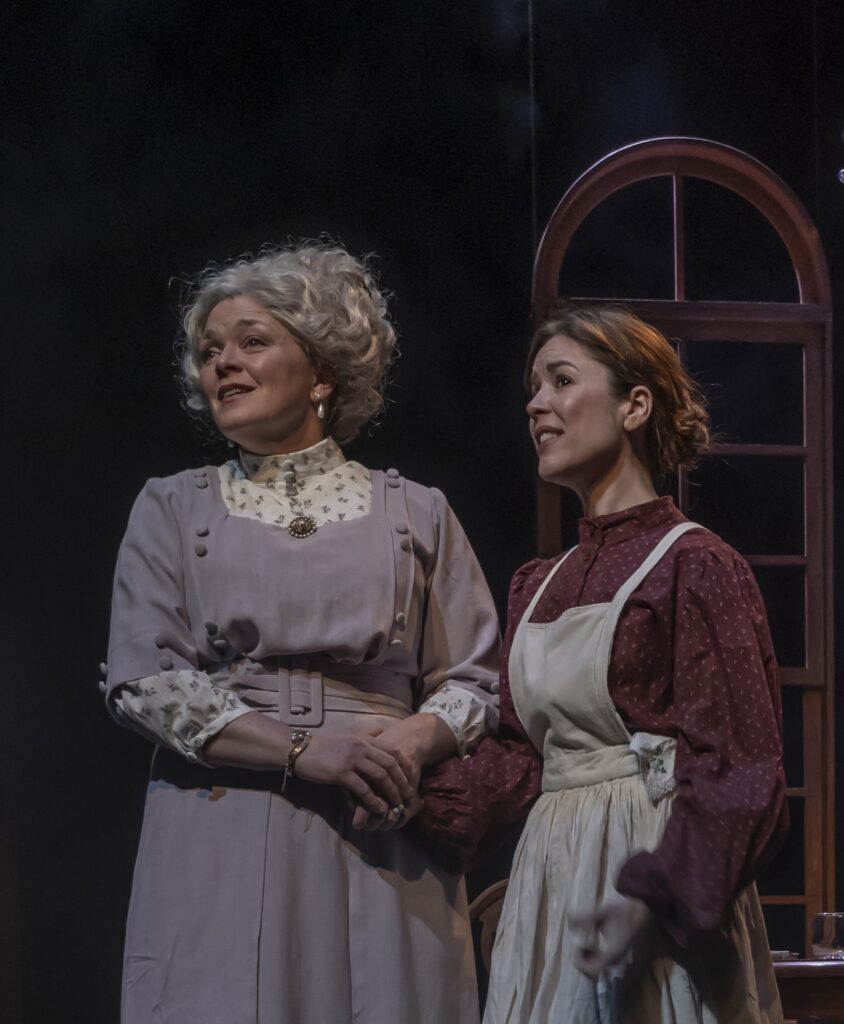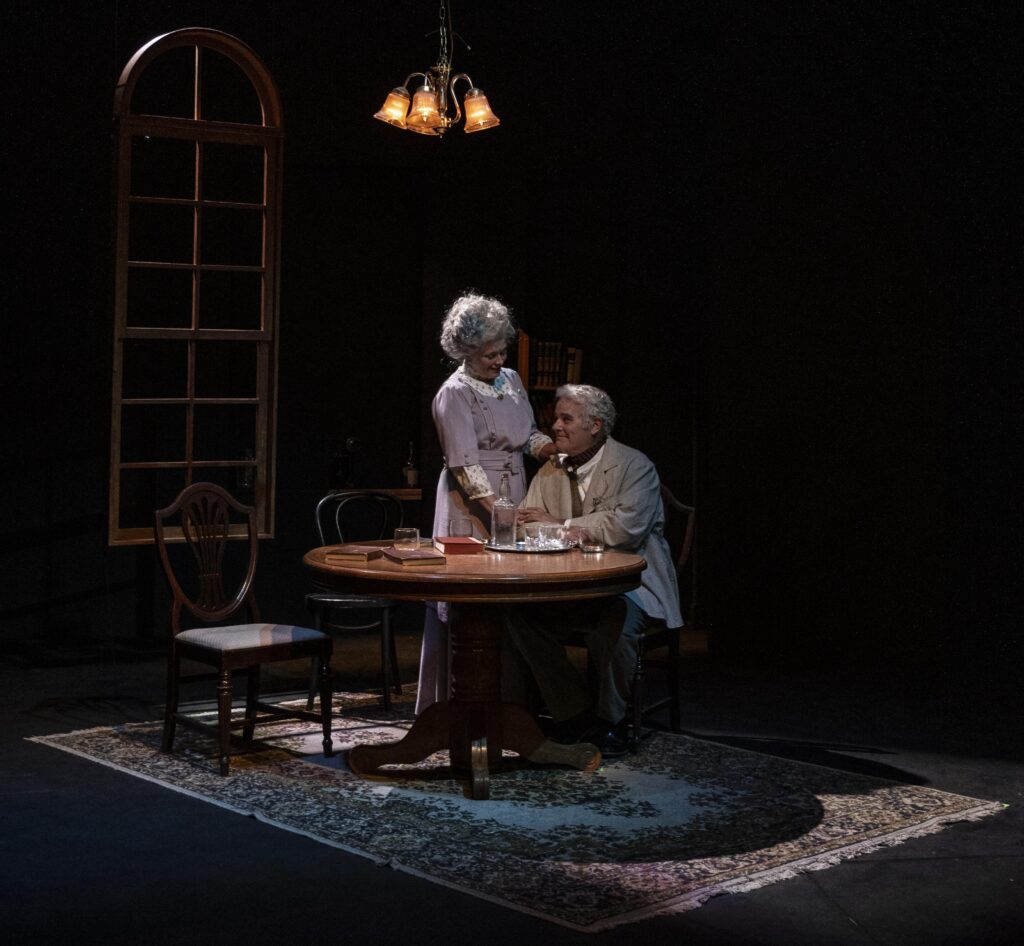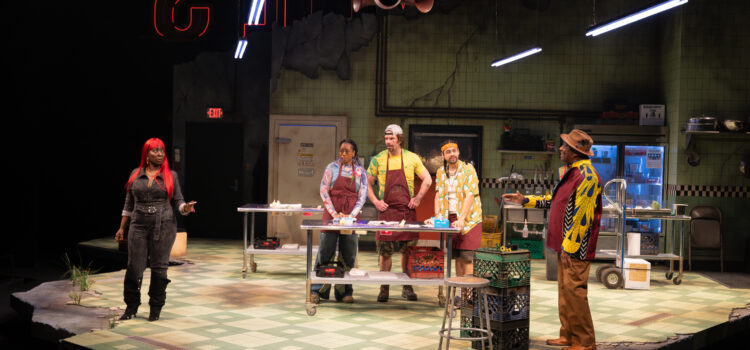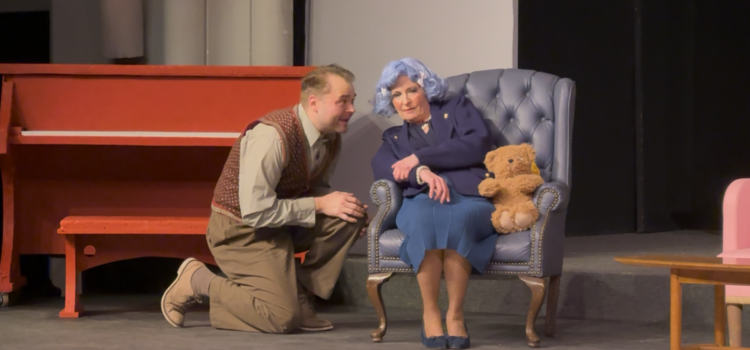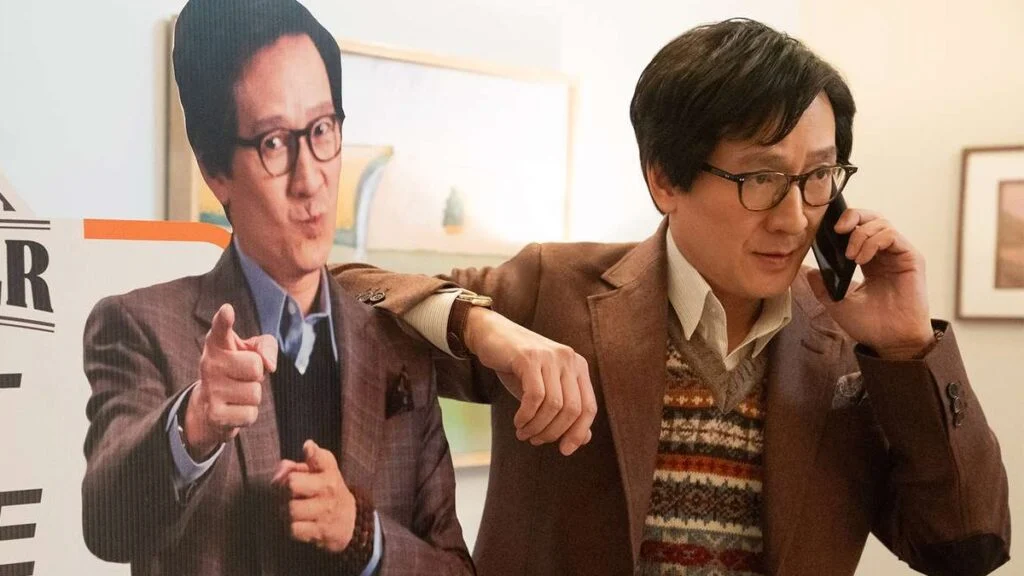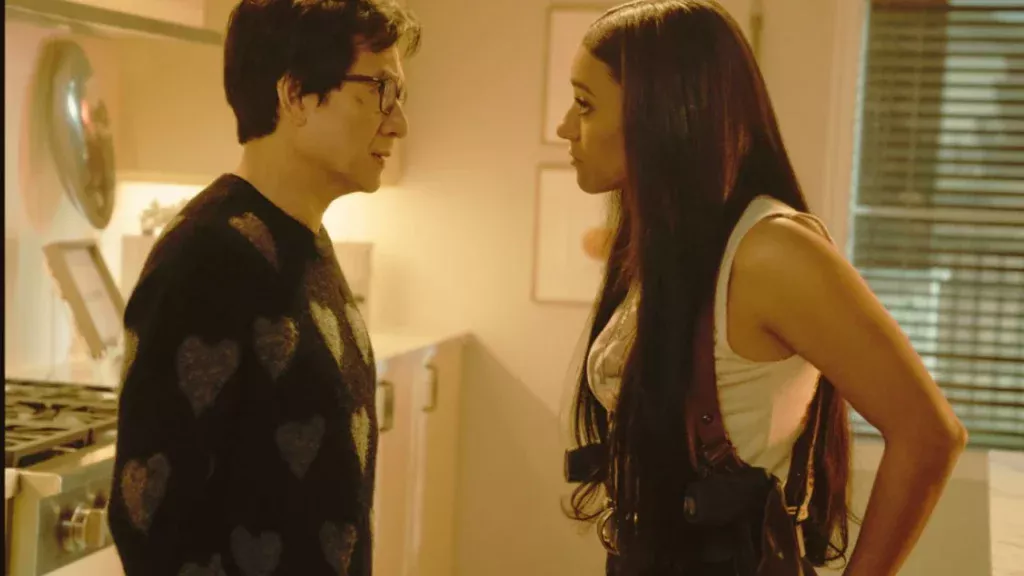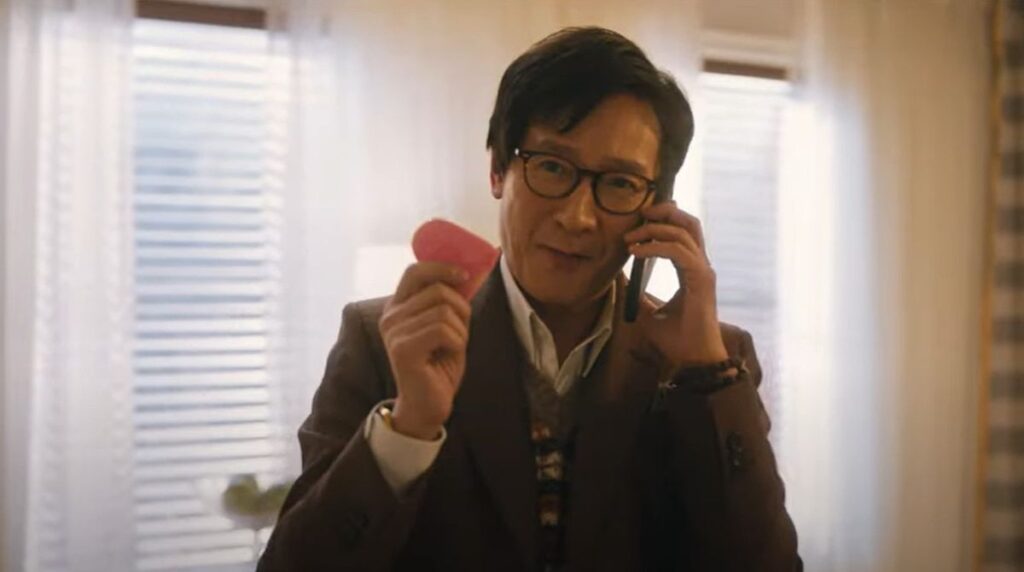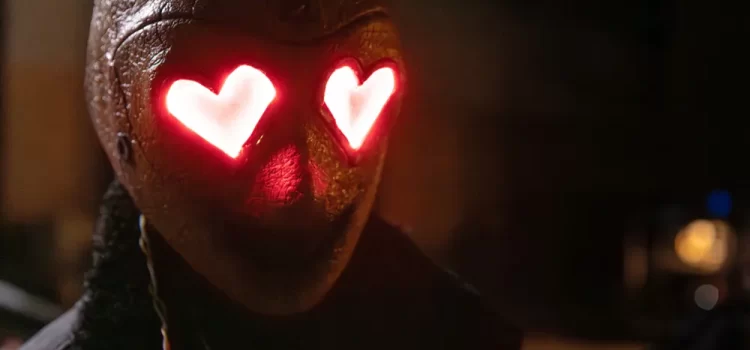The Jack C. Taylor Music Center opens following a two-year, $140 million expansion and renovation, transforming the audience and artist experience
Music Director Stéphane Denève leads a reopening performance for the venue’s neighbors and community and an opening weekend celebration with mezzo-soprano Joyce DiDonato;venue welcomes entire region for community open house in November
World premieres of three SLSO commissions: Nathalie Joachim’s Family (composed for the SLSO IN UNISON® Chorus), James Lee III’s Fanfare for Universal Hope, and Kevin Puts’House of Tomorrow (song cycle with Joyce DiDonato and members of the St. Louis Symphony Chorus); SLSO co-commissions and St. Louis premieres of Carlos Simon’s Double Concerto with violinist Hilary Hahn and cellist Seth Parker Woods and a new work by Jasmine Guo
Commitment to music of today, with 40 percent of pieces on classical programs by living composers, including four pieces by Kevin Puts, who will serve as composer in residence
Denève conducts pillars of the symphonic repertoire, including Richard Strauss’ Ein Heldenleben; Sergei Rachmaninoff’s Symphony No. 2; Benjamin Britten’s War Requiem; Igor Stravinsky’s complete score to the ballet, The Firebird; W.A. Mozart’s The Magic Flute in its entirety; Gustav Mahler’s Symphony No. 5; Maurice Ravel’s complete Daphnis and Chloé; and Igor Stravinsky’s Pulcinella Suite with dancers from Saint Louis Dance Theatre
New chamber music series, featuring two programs curated by and performed with visiting artists, violinist Augustin Hadelich and pianist Orli Shaham
Introduction of recital series, with performances by acclaimed pianists Víkingur Ólafsson and Isata Kanneh-Mason
Denève welcomes his predecessors, David Robertson (Music Director 2005-2018) and SLSO Conductor Laureate Leonard Slatkin (Music Director 1979-1996), alongside returning conductors Hannu Lintu, Nicholas McGegan, John Storgårds, and Xian Zhang; plus returning pianists Emanuel Ax, Stewart Goodyear, Víkingur Ólafsson, Orli Shaham, Jean-Yves Thibaudet, and Joyce Yang; violinists Augustin Hadelich, Hilary Hahn, Leila Josefowicz, and Nikolaj Szeps-Znaider; vocalists Christine Goerke, John Matthew Myers, Sherezade Panthaki, and Philippe Sly; and ensembles The St. Louis Children’s Choirs and Saint Louis Dance Theatre
Artists new to the SLSO include conductors Ryan Bancroft, Tabita Berglund, Kevin John Edusei, Dima Slobodeniouk, and Anna Sułkowska-Migoń; pianists Isata Kanneh-Mason, Jan Lisiecki, and Gabriela Montero; cellists Seth Parker Woods and Kian Soltani; vocalists Ben Bliss, Ian Bostridge, Sara Couden, Joyce DiDonato, Rainelle Krause, and Roderick Williams; trio Time for Three; saxophonist Steven Banks; and sheng player Wu Wei
More concerts to be announced, including chamber music at the Pulitzer Arts Foundation and The Sheldon; happy hour concerts; Concerts for Kids; and additional specials
The St. Louis Symphony Orchestra (SLSO) and Stéphane Denève, The Joseph and Emily Rauh Pulitzer Music Director, announced programming for the orchestra’s 2025/2026 season, the orchestra’s 146th and Denève’s seventh as Music Director. This celebratory season welcomes the community back to the SLSO’s concert venue following two years of construction. The Jack C. Taylor Music Center includes a complete renovation of Powell Hall—the historic venue built in the 1920s that has served as the orchestra’s home since 1968—and a 64,000-square-foot expansion. Designed with community service at its forefront, the project preserves the civic treasure for generations to come, transforms the audience and artist experience, and makes music more accessible.

Stéphane Denève, The Joseph and Emily Rauh Pulitzer Music Director of the SLSO, said,
“From the celebratory first notes of Aaron Copland’s Fanfare for the Common Man to the world premiere of Nathalie Joachim’s all-embracing Family to close our season, I dreamed of a festive musical journey that will serve and unite our entire community through the joy of music, resonating again in our wonderfully restored Powell Hall. This new season is filled with vibrant, compelling, and diverse repertoire, accelerating our belief that our home—this ‘House of Tomorrow’ as our composer in residence Kevin Puts calls it in his monumental new piece— is for everybody. Our musical offering looks towards the future but will also commemorate important moments in history—the 80th anniversary of the end of World War II and America’s 250th birthday. I cannot wait to feel the momentum of this new era with our immensely talented musicians, chorus members, and outstanding guest artists.”
Marie-Hélène Bernard, SLSO President and CEO, said,“The 25/26 season realizes our vision of an expanded concert venue that welcomes the community wholeheartedly, supports the immense talents of our orchestra musicians and choruses, and centers music as a catalyst to gather, learn, and celebrate. Stéphane and our team have crafted a season that showcases the vitality of symphonic music, welcoming an outstanding roster of guest artists, performing treasured classics, and building on our history of fostering the future of our art form. We anticipate with excitement sharing meaningful experiences with our audiences both at the renovated Powell Hall and throughout the region.”
Bjorn Ranheim and Chris Tantillo, co-chairs of the SLSO Musicians’ Council, said, “The musicians of the St. Louis Symphony Orchestra are thrilled to return to our beloved Powell Hall for a season full of orchestral fireworks. Celebrating the past, present, and future of the organization will be an incredibly powerful experience in our beautifully restored and revitalized home. We look forward to welcoming the community back and continuing our mission of enriching people’s lives through the power of music.”
Curated and Compose Your Own Subscriptions are on sale now. Single tickets go on sale later in 2025. Visit slso.org/season or call the Box Office at 314-534-1700 for more information.

REOPENING THE SLSO’S HOME
The 146th season welcomes audiences to experience the Jack C. Taylor Music Center, for the first time since the completion of a transformational expansion and renovation project. The $140 million project, designed by the internationally acclaimed architecture firm Snøhetta, centers the SLSO’s priorities on artistic excellence, community engagement, and education leadership. The project provides new and improved amenities for audiences and artists, while preserving and enhancing the internationally recognized acoustics and aesthetics of the concert hall. A new Education and Learning Center provides additional space for the SLSO’s two resident choruses, its Youth Orchestra, and a robust portfolio of education and community programs.
A season-long celebration of Powell Hall’s reopening, programming showcases the virtuosity and nimbleness of the orchestra musicians and guest artists, and includes a wide variety of music, responding to the community’s diverse tastes and interests. Pillars of orchestral repertoire share programs with music by composers of today with 40 percent of pieces on classical concerts by living composers. While looking to today’s and tomorrow’s musical voices, Denève and the SLSO also honor important moments in history, notably the 80th anniversary of the conclusion of World War II through performances of war-time and war-inspired pieces, and the 250th anniversary of the founding of the United States, building on the SLSO’s long-held priority of elevating music by American voices. Broadening the definition of what a symphonic organization can achieve, programming also includes films with scores performed live, cross-genre collaborations and presentations, chamber music in multiple settings, holiday commemorations, happy hour concerts, and a new recital series.
On September 19, Denève leads the orchestra for the first time in the renovated Powell Hall, inaugurating the Jack C. Taylor Music Center with a ceremonial ribbon cutting and special performance for the venue’s neighbors and community partners.
On September 26-28, Denève opens the season with a triumphant trio of fanfares by Aaron Copland, Joan Tower, and a world premiere by James Lee III, and leads the world premiere of Kevin Puts’ House of Tomorrow, written for and featuring acclaimed mezzo-soprano Joyce DiDonato and members of the St. Louis Symphony Chorus on a text adapted from the poet Kahlil Gibran. Richard Strauss’ Ein Heldenleben closes the program.
On November 8, the SLSO will welcome the community to a free day of music. Additional details about this and other reopening events will be shared later.
SEASON HIGHLIGHTS WITH DENÈVE
Denève opens the season with the celebratory free community concert on Art Hill in Forest Park, an annual tradition that draws tens of thousands of people and serves as the ceremonial start of the SLSO’s season, performed in memory of longtime SLSO supporter Mary Ann Lee (September 17).
Denève welcomes a roster of internationally recognized guest artists to St. Louis, including violinist Nikolaj Szeps-Znaider for a program that pairs two iconic Romantic pieces: Pyotr Ilyich Tchaikovsky’s Violin Concerto and Sergei Rachmaninoff’s Symphony No. 2 (November 1-2). On November 7 and 9, the SLSO commemorates the 80th anniversary of the conclusion of World War II with performances of Benjamin Britten’s monumental War Requiem, with the St. Louis Symphony Chorus, The St. Louis Children’s Choirs, and a stellar cast of vocalists: soprano Christine Goerke, tenor Ian Bostridge, and baritone Roderick Williams.
Denève leads a rare complete performance of Igor Stravinsky’s score to the ballet, The Firebird, and his close friend and collaborator, Jean-Yves Thibaudet, joins for Aram Khachaturian’s Piano Concerto (November 21-22). The New Year’s Eve concert features pianist Stewart Goodyear in George Gershwin’s Rhapsody in Blue in a French and American-themed musical celebration led by Denève (December 31).

Furthering Denève’s interest in artistic collaborations, Saint Louis Dance Theatre dancers perform original choreography by Kirven Douthit-Boyd alongside the orchestra for Igor Stravinsky’s Pulcinella Suite (January 10-11). The program also includes signature Denève programming with music by Claude Debussy and Albert Roussel.
For the first time on the Powell Hall stage, the orchestra performs Mozart’s complete concert version of the opera, The Magic Flute,with Denève, the St. Louis Symphony Chorus, and The St. Louis Children’s Choirs, and a cast of vocalists including tenor Ben Bliss as Tamino and coloratura soprano Rainelle Krause as The Queen of the Night(February 20 and 22), advancing Denève’s commitment to large-scale choral and operatic performances.
Denève shares his lifelong respect and admiration for his personal friend, prolific film composer John Williams, in a program that includes excerpts from Williams’ scores to Close Encounters of the Third Kind, Star Wars, and E.T. alongside the first SLSO performances of Kevin Puts’ Contact, a triple concerto performed by trio Time for Three (March 20 and 22).
Welcoming back the acclaimed pianist and former SLSO touring partner Víkingur Ólafsson, Denève leads Beethoven’s Emperor Piano Concerto, a new SLSO co-commission by Jasmine Guo as part of the Virginia B. Toulmin Foundation Orchestral Commission program, and Kevin Puts’ Concerto for Orchestra, premiered by the SLSO in 2023 (March 27-28). Denève leads another SLSO co-commissioned work, Carlos Simon’s Double Concerto with star violinist Hilary Hahn and cellist Seth Parker Woods, alongside Gustav Mahler’s massive Symphony No. 5 (April 10-12).
Denève brings the entire SLSO roster of musicians together for the final symphonic concert of the season. The SLSO IN UNISON® Chorus, with the unique mission of performing and preserving music from the African diaspora, gives the world premiere of Family, composed by Nathalie Joachim following many conversations with chorus members. The concert opens with SLSO’s previously commissioned work, Kevin Puts’ Virelai. The St. Louis Symphony Chorus joins the orchestra for Maurice Ravel’s Daphnis and Chloé.

RETURNING ARTISTS AND SLSO ENSEMBLES
Many of the world’s leading conductors return to the SLSO. David Robertson, who served as the 12th SLSO Music Director from 2005-2018, returns in a program that features music by Steve Mackey and Sarah Kirkland Snider, and pianist Orli Shaham on Robertson’s own piano concerto, and Leonard Bernstein’s Symphony No. 2, “The Age of Anxiety” (March 6-7). Conductor Laureate Leonard Slatkin leads the second week of classical concerts, welcoming back his friend, pianist Emanuel Ax, for Mozart’s Piano Concerto No. 25, Edward Elgar’s Symphony No. 1, and his own Schubertiade: An Orchestral Fantasy (October 11-12).
Additional returning conductors include John Storgårds, in a program anchored by Dmitri Shostakovich’s Symphony No. 15 (December 5-6); Nicholas McGegan, leading G.F. Handel’s Messiah (December 12-14); Xian Zhang conducting Billy Childs’ Diaspora (Saxophone Concerto) and Sergei Prokofiev’s Symphony No. 5 (February 6-7); and Hannu Lintu leading a program of works by Richard Wagner, W.A. Mozart, Samy Moussa, and Ottorino Respighi’s rarely performed Church Windows (April 18-19).
Pianists making their SLSO returns include Jean-Yves Thibaudet on Aram Khachaturian’s Piano Concerto (November 21-22); Joyce Yang on Sergei Rachmaninoff’s Rhapsody on a Theme of Paganini (November 29-30); Stewart Goodyear on George Gershwin’s Rhapsody in Blue (December 31); and Víkingur Ólafsson on Ludwig van Beethoven’s Piano Concerto No. 5, “Emperor” (March 27-28) and in recital (March 26). Returning violinists include Augustin Hadelich on Sergei Prokofiev’s Violin Concerto No. 2 (October 24-25) and in a program of chamber music with SLSO musicians (October 26); Nikolaj Szeps-Znaider on Tchaikovsky’s Violin Concerto (November 1-2); Leila Josefowicz on Alban Berg’s Violin Concerto (March 14-15); and Hilary Hahn on Carlos Simon’s Double Concerto (April 10-12).
Soprano Christine Goerke, in Benjamin Britten’s War Requiem (November 7 and 9), as well as most of the vocal cast for Handel’s Messiah: soprano Sherezade Panthaki, tenor John Matthew Myers, and baritone Philippe Sly (December 12-14) also return.
The St. Louis Symphony Chorus, which has performed repertoire from the entire choral-orchestral canon to critical acclaim since its formation in the 1976/1977 season, performs alongside the SLSO under the direction of Erin Freeman. In the 25/26 season, the chorus performs Kevin Puts’ House of Tomorrow (September 26-28); Benjamin Britten’s War Requiem (November 7 and 9); G.F. Handel’s Messiah (December 12-14); W.A. Mozart’s The Magic Flute (February 20 and 22); Maurice Ravel’s Daphnis and Chloé (May 8-10).
The St. Louis Symphony IN UNISON® Chorus, which preserves and performs music from the African diaspora and is directed by Kevin McBeth in his 15th season, returns for its annual holiday-time soulful celebration: IN UNISON® Christmas (December 19). The chorus performs its annual Lift Every Voice: Celebrating Black History Month concert, also under McBeth’s direction and featuring vocalist Rosephanye Dunn Powell (February 27). The chorus joins the SLSO in the final classical concerts of the season, performing the world premiere of Nathalie Joachim’s Family (May 8-10).
The St. Louis Symphony Youth Orchestra, the region’s premiere training orchestra for young musicians aged 12-22, will present three concerts in its 56th season. Concert details will be announced later.

ARTIST DEBUTS
Throughout the 25/26 season, many acclaimed artists will make their SLSO debut.
Five conductors make their debuts on symphonic programs, including Tabita Berglund in a program of Russian and Scandinavian music (October 24-25); Kevin John Edusei with Beethoven’s Symphony No. 7 (November 29-30); Dima Slobodeniouk leading a concerto for sheng and Tchaikovsky’s Symphony No. 4 (January 24-25); Anna Sułkowska-Migoń in a program with Polish connections, alongside Rimsky-Korskov’s Scheherazade (March 14-15); and Ryan Bancroft leading Copland’s Symphony No. 3 (April 24-25).
Instrumentalists making their SLSO debuts include: pianists Jan Lisiecki performing Mozart’s Piano Concerto No. 9, “Jeunehomme” (April 18-19), Gabriela Montero performing Prokofiev’s Piano Concerto No. 3 (April 24-25), and Isata Kanneh-Mason in a recital with music by Beethoven, Ravel, and Tabakova (May 14); cellists Kian Soltani on Haydn’s Cello Concerto in C major (December 5-6), and Seth Parker Woods in Carlos Simon’s Double Concerto (April 10-12); sheng player Wu Wei on Jukka Tiensuu’s Teoton, a concerto for sheng (January 24-25); and saxophonist Steven Banks, an international ambassador for his instrument, who performs Billy Childs’ Diaspora (February 6-7).
Time for Three—a trio consisting of violinists Nick Kendall and Charles Yang, and double bassist Ranaan Meyer—debut on Kevin Puts’ Contact (March 20 and 22).
Vocalists making their debuts include mezzo-soprano Joyce DiDonato singing the world premiere of Kevin Puts’ House of Tomorrow (September 25-27); tenor Ian Bostridge and baritone Roderick Williams in Britten’s War Requiem (November 7 and 9); contralto Sara Couden in Handel’s Messiah (December 12-14); and tenor Ben Bliss and soprano Rainelle Krause in Mozart’s The Magic Flute (February 20 and 22).
WORLD PREMIERES, COMMISSIONS, AND FIRST SLSO PERFORMANCES
More than 20 pieces enter the SLSO’s repertoire during the 2025/2026 season, including 15 works by living composers. In addition to world premieres by Nathalie Joachim, James Lee III, and Kevin Puts, the SLSO performs works by living composers including Billy Childs, Guillaume Connesson, Reena Esmail, Samy Moussa, David Robertson, Leonard Slatkin, Sarah Kirkland Snider, Jukka Tiensuu, and Joan Tower. Nearly 40 percent of the pieces on symphonic programs are by living composers.
World premieres

James Lee III’s Fanfare for Universal Hope builds on the composer’s relationship with Denève and the orchestra as one of the SLSO’s most-performed composers in recent years. Since 2019, the SLSO has performed four of Lee’s pieces, including the 2023 world premiere of the SLSO-commissioned Visions of Cahokia, inspired by the indigenous civilization near present-day St. Louis.
Kevin Puts’ House of Tomorrow is a new song cycle based on texts by Kahlil Gibran, the writer, poet, and artist. Mezzo-soprano Joyce DiDonato delivers the world premiere performance alongside the SLSO and members of the St. Louis Symphony Chorus. Puts serves as composer in residence during the SLSO’s 25/26 season, and the orchestra will play three additional pieces by him: Contact, Concerto for Orchestra, and Virelai. The latter two were SLSO commissions premiered in 2023 and 2019 respectively.
Nathalie Joachim’s Family takes inspiration from the St. Louis Symphony IN UNISON® Chorus, a resident chorus with the unique mission to perform and preserve music from the African diaspora. Joachim logged many conversations with IN UNISON® Chorus singers, utilizing their words as the text for her piece.
SLSO Co-commissions
A new work by Jasmine Guo is part of the Virginia B. Toulmin Foundation Orchestral Commission program of the League of American Orchestras, connecting female composers with orchestras to commission new work. The SLSO previously participated in the program as the lead commissioner of Stacy Garrop’s Goddess Triptych, premiered in March 2022.
Carlos Simon’s Double Concerto will receive its Midwest premiere with the SLSO and violinist Hilary Hahn and cellist Seth Parker Woods.

First SLSO performances
Joan Tower Fanfare for the Uncommon Woman No. 1 (September 26-28)
Leonard Slatkin Schubertiade: An Orchestral Fantasy (October 11-12)
Harald Sæverud The Ballad of Revolt (October 24-25)
Guillaume Connesson Maslenitsa (November 21-22)
Clara Wieck Schumann (orch. de Murashkin) Three Romances (December 5-6)
Jukka Tiensuu Teoton (Concerto for Sheng and Orchestra) (January 24-25)
Reena Esmail RE|Member (February 6-7)
Billy Childs Diaspora (Concerto for Saxophone and Orchestra) (February 6-7)
David Robertson Light forming, A Piano Concerto(March 6-7)
Sarah Kirkland Snider Something for the Dark (March 6-7)
Grażyna Bacewicz Overture (March 14-15)
Kevin Puts Contact (March 20 & 22)
Samy Moussa Elysium (April 18-19)
Chamber music and recitals
In a two-concert series, the SLSO presents acclaimed guest artists in chamber music concerts they curate, collaborating with orchestra musicians in a more intimate setting. Violinist Augustin Hadelich curates the October 26 program and pianist Orli Shaham leads the March 8 concert.
The SLSO introduces a new two-concert recital series, presenting acclaimed musicians in solo works on Powell Hall’s stage. Inaugural artists in this series include pianists Víkingur Ólafsson, performing Beethoven’s final three piano sonatas (March 26), and Isata Kanneh-Mason, presenting Beethoven’s famous “Moonlight” sonata alongside works by Maurice Ravel and Dobrinka Tabakova (May 14).
Additional information about the SLSO’s Live at the Pulitzer (chamber music exploring the intersection of visual and aural art by composers of today, performed at the Pulitzer Arts Foundation) and Live at The Sheldon (music from the entire chamber music library curated and performed by SLSO musicians at The Sheldon) will be announced later.
Films with live score

The SLSO continues its popular film series, performing acclaimed scores live while the movie plays overhead. Films in the 25/26 season include Harry Potter and the Sorcerer’s StoneTM (October 3-5), The Lion King (November 15-16), Home Alone (December 27-28), and The Wizard of Oz (January 30-February 1). The SLSO presents Marvel Infinity Saga in Concert, a cross-film journey through Marvel’s most exciting moments (May 1-3).
Holiday and special programming
Broadening the definition of a symphony concert, the SLSO plans several special events to respond to patrons’ diverse tastes.
The SLSO pays tribute to the memory of St. Louis icon Chuck Berry in a brand new program celebrating the rock legend’s 100th birthday and in collaboration with the Chuck Berry estate (October 17-18). Curated and arranged by prolific composer Carlos Simon, the SLSO explores the legacy of jazz great John Coltrane, led by Edwin Outwater and featuring saxophonist Joe Lovano (February 28).
Holiday concerts include the popular IN UNISON® Christmas concert, previously known as Gospel Christmas (December 19), which features the IN UNISON® Chorus led by Kevin McBeth. The Mercy Holiday Celebration presents five concerts of beloved holiday music with conductor Stuart Malina at Powell Hall (December 20-21 and 23). Denève leads the annual New Year’s Eve Celebration Concert, featuring pianist Stewart Goodyear and music by Leonard Bernstein, Georges Bizet, and George Gershwin (December 31). The SLSO also performs its annual Lift Every Voice: Celebrating Black History Month concert with the IN UNISON® Chorus and vocalist Rosephanye Dunn Powell (February 27).
Additional special concerts, happy hour concerts, and Concerts for Kids, will be announced later.

OPERA THEATRE OF SAINT LOUIS
The SLSO will conclude its season as the resident orchestra of Opera Theatre of Saint Louis (OTSL), the 49th year of this partnership. The 2026 Festival Season runs May 23–June 28, 2026. Programming for OTSL’s 2026 Festival Season will be announced later this summer. The current 2025 Festival Season takes place this May and June, marking the occasion of OTSL’s 50th anniversary; tickets and more information can be found at ExperienceOpera.org.
About the St. Louis Symphony Orchestra
Celebrated as one of today’s most exciting and enduring orchestras, the St. Louis Symphony Orchestra is the second-oldest orchestra in the country, marking its 145th year with the 2024/2025 season and its sixth with Stéphane Denève, The Joseph and Emily Rauh Pulitzer Music Director. Widely considered one of the leading American orchestras, the Grammy® Award-winning SLSO maintains its commitment to artistic excellence, educational impact, and community collaborations—all in service to its mission of enriching lives through the power of music.
The core of the SLSO’s artistic foundation is its dynamic partnership with Denève, whose energetic musicianship, visionary storytelling, and collaborative spirit have created stronger connections with local and visiting artists, as well as advanced the SLSO’s role as a leader in music education. The SLSO musical family also includes two resident choruses: the St. Louis Symphony Chorus, founded in 1976, performs choral-orchestral music from the Baroque era to today; and the St. Louis Symphony IN UNISON® Chorus, founded in 1994, focuses on the performance and preservation of music from the African diaspora. The St. Louis Symphony Youth Orchestra, founded by Conductor Laureate Leonard Slatkin in 1970, is the region’s premiere training orchestra for high school and college students.
In March 2023, the SLSO broke ground on a 65,000-square foot expansion and renovation of the orchestra’s home, Powell Hall—the first major renovation project at the historic Grand Center building since it became the SLSO’s permanent home in 1968. Led by the internationally acclaimed architecture firm Snøhetta, the project will transform the audience and artistic experience while protecting Powell Hall’s historic character and celebrated acoustics, creating a state-of-the art center for community, innovation, and powerful music experiences. While construction is underway, the SLSO will perform throughout the community. The revitalized Powell Hall will open in September 2025, coinciding with the building’s centennial.
An integral part of the vibrant St. Louis community, the SLSO enjoys a long history of robust and enduring artistic collaborations with individuals and organizations locally and around the world. Orchestra musicians share dozens of education and community performances throughout the region each year at medical facilities, places of worship, community centers, and schools. For 20 years, the St. Louis Symphony Orchestra: Live at the Pulitzerseries has highlighted today’s leading musical voices through innovative performances in collaboration with, and reaction to the exhibitions at, the Pulitzer Arts Foundation. The SLSO has served as the resident orchestra for Opera Theatre of Saint Louis for more than 45 years. The orchestra also continues to foster impactful artistic collaborations, including a chamber music series with The Sheldon, as well as regular partnerships with The Muny, Saint Louis Dance Theatre, the Saint Louis Art Museum, and others. Beyond the St. Louis region, the SLSO’s impact is realized through Saturday night concert broadcasts on St. Louis Public Radio and Classic 107.3, acclaimed recordings, regular touring activity, and a digital portfolio that includes a robust online education platform with curriculum materials, interactive programs, activities, and learning opportunities for all ages.
Since the arrival of Marie-Hélène Bernard as President and CEO in 2015, the SLSO has aligned its mission to make music more accessible, while fostering a culture welcoming to all. Building on its momentum, the SLSO serves as a convener of individuals, creators, and ideas, and is committed to building community through compelling and inclusive musical experiences. As it continues its longstanding focus on equity, diversity, inclusion, and access, the SLSO embraces its strengths as a responsive, nimble organization, while investing in partnerships locally and elevating its presence globally. For more information, visit slso.org.












